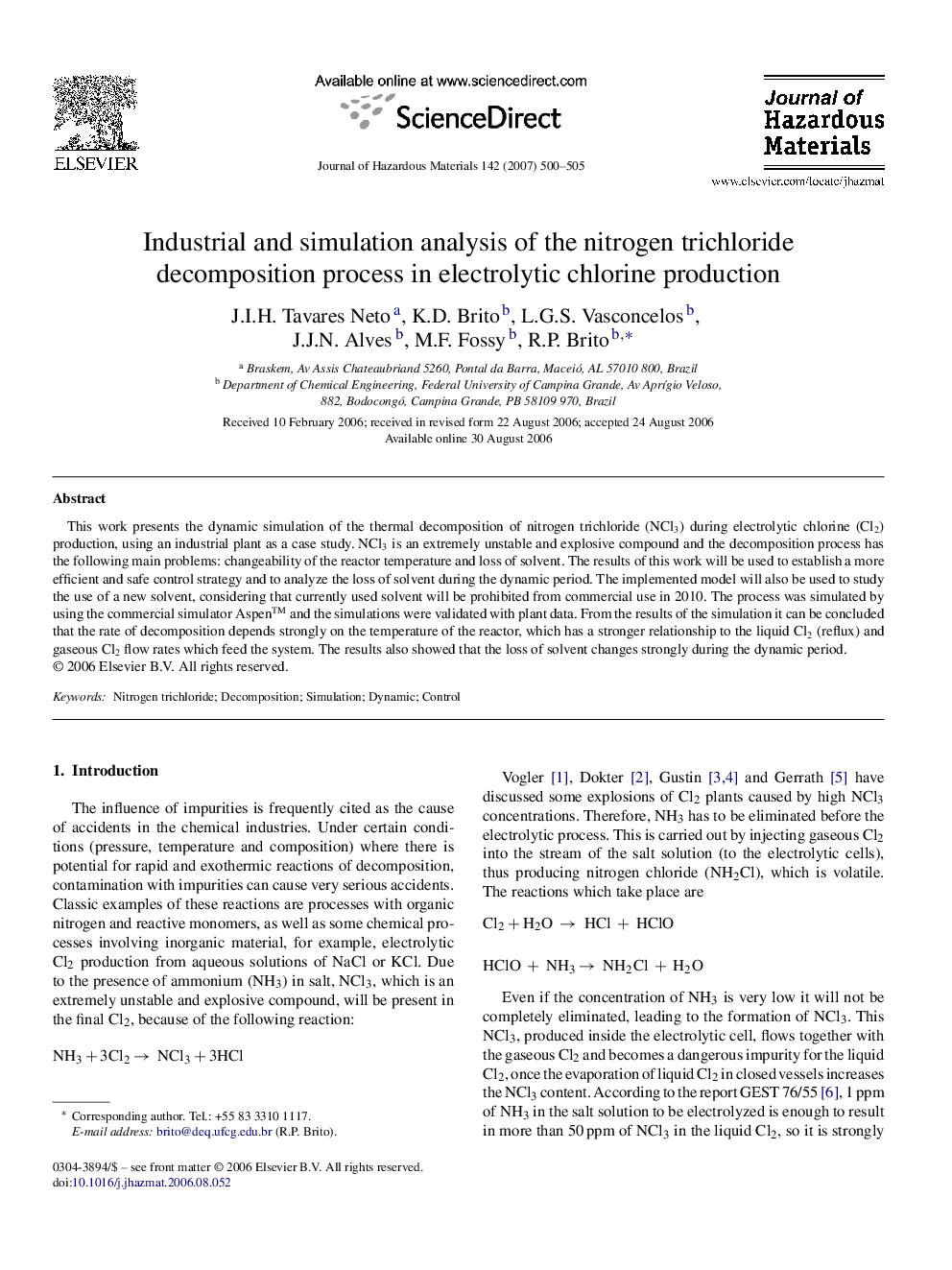| Article ID | Journal | Published Year | Pages | File Type |
|---|---|---|---|---|
| 584581 | Journal of Hazardous Materials | 2007 | 6 Pages |
Abstract
This work presents the dynamic simulation of the thermal decomposition of nitrogen trichloride (NCl3) during electrolytic chlorine (Cl2) production, using an industrial plant as a case study. NCl3 is an extremely unstable and explosive compound and the decomposition process has the following main problems: changeability of the reactor temperature and loss of solvent. The results of this work will be used to establish a more efficient and safe control strategy and to analyze the loss of solvent during the dynamic period. The implemented model will also be used to study the use of a new solvent, considering that currently used solvent will be prohibited from commercial use in 2010. The process was simulated by using the commercial simulator Aspen⢠and the simulations were validated with plant data. From the results of the simulation it can be concluded that the rate of decomposition depends strongly on the temperature of the reactor, which has a stronger relationship to the liquid Cl2 (reflux) and gaseous Cl2 flow rates which feed the system. The results also showed that the loss of solvent changes strongly during the dynamic period.
Related Topics
Physical Sciences and Engineering
Chemical Engineering
Chemical Health and Safety
Authors
J.I.H. Tavares Neto, K.D. Brito, L.G.S. Vasconcelos, J.J.N. Alves, M.F. Fossy, R.P. Brito,
